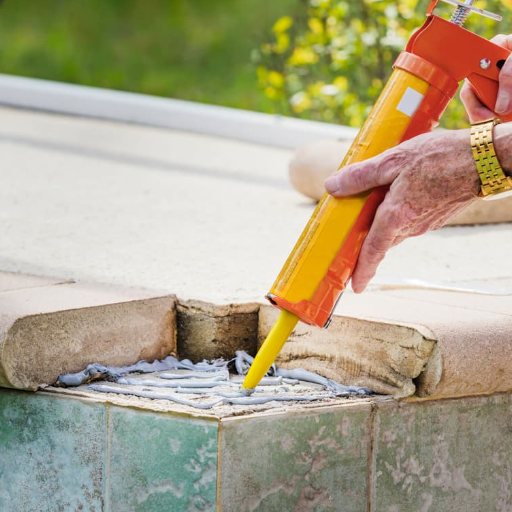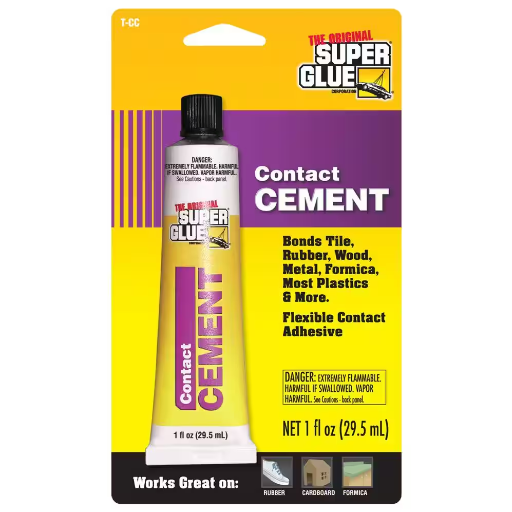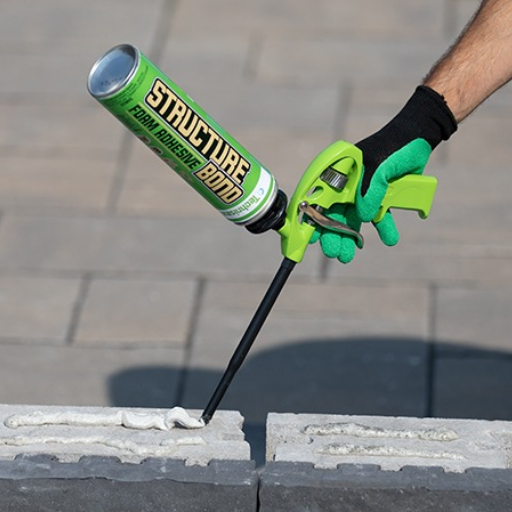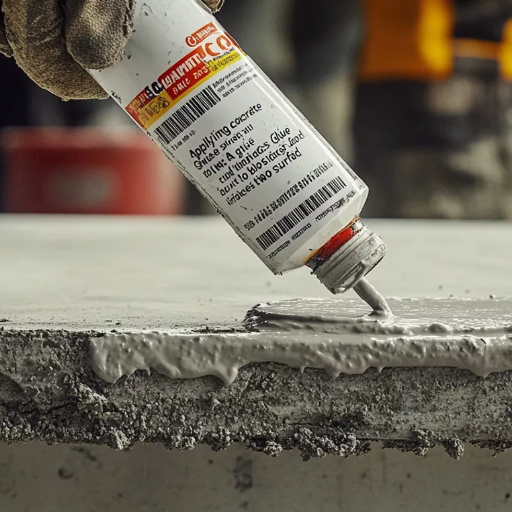Choosing the right glue for concrete can feel like finding a needle in a haystack. One smart pick can keep a sidewalk solid for years; the wrong one might give out before the first winter. People patch cracks, mount handrails, or even glue stone countertops in place, and each job asks something different from the bond. The good news is you dont have to guess. This short guide cuts through the clutter and answers the three biggest questions: What kind of strength do I really need? Which brand tops customer reviews? And how can I avoid the messy headaches that come from rushing a project? By the end of the next few paragraphs, you’ll know precisely what to grab the next time concrete cracks or chips.
What Is the Best Adhesive for Concrete?

Epoxy formulations stand out because they bond tenaciously, shrug off moisture, and adhere to concrete in almost any weather. Engineers trust them under bridges and inside high-rise cores for good reason. Polyurethane options occupy the second tier; they cure more slowly but allow some movement once set, making them ideal for narrow horizontal cracks or sculptures exposed to sunlight. Many contractors suggest keeping both types handy instead of playing single-product roulette. Always check the label for the word CONCRETE to avoid an embarrassing surprise. Application instructions are seldom optional.
Understanding Concrete Adhesives
Manufacturers design concrete adhesives with a range of targeted attributes that meet the material, environmental, and service demands of construction work. Bond strength stands at the center of these specifications; if the glue fails to hold under applied tension or shear, the entire repair or join can collapse. A typical epoxy variant, measured in controlled lab tests, shows a tensile bond strength reaching or surpassing 2000 psi, though field results may vary depending on surface preparation and ambient conditions. Chemical resistance, listed in product data sheets as exposure to acids, solvents, or salt sprays, grants longevity in industrial settings where spills are routine. Viscosity controls the behavior during application; low spreads seep into hairline cracks like oil, while a thicker paste fills wide cavities without sagging.
Cure speed completes the picture. Rapid-cure blends, often marketed as fast-setting or quick-bond, achieve usable strength within minutes and cut down on idle time for scaffolding or forms. Temperature swings and humidity are inevitable in exterior pours, so any adhesive worth the name must retain its bond through freeze-thaw cycles and wet-dry environments. Acquaintance with these metrics allows site supervisors to pair the right adhesive with the right job, minimizing guesswork when progress cannot afford delays.
Comparing Epoxy vs. Construction Adhesive
|
Key Point |
Epoxy Adhesive |
Construction Adhesive |
|---|---|---|
|
Primary Composition |
Resin and hardener |
Synthetic polymers or polyurethane |
|
Bonding Strength |
Extremely high |
Moderate to high |
|
Setting Time |
Longer (hours to days) |
Shorter (minutes to hours) |
|
Durability |
Superior under stress |
Good for general applications |
|
Water Resistance |
Excellent |
Varies by product |
|
Temperature Resistance |
High |
Moderate to high |
|
Flexibility |
Rigid |
Generally more flexible |
|
Application Methods |
Requires precise mixing |
Easy and direct application |
|
Best For |
Structural and heavy-duty bonding |
General construction and repairs |
|
Surface Adhesion |
Versatile, bonds to most materials |
Stronger on specific surfaces |
|
Cost |
Higher |
Lower |
|
Chemical Resistance |
Outstanding |
Moderate |
|
Gap-Filling Ability |
Limited |
Good |
|
Cleanup Process |
Requires solvent cleaning |
Easier with water or basic solvents |
|
Usability for Large Areas |
Less practical |
Well-suited |
What Makes a High Strength Adhesive?
A high-strength adhesive earns its name by forming joints that refuse to fail even under unusual mechanical strain or rugged weather. Engineers speak of dramatic shear, tensile, and peel figures one glance at the numbers makes it clear why such glues are routine in bridges, jet fuselages, racing chassis, and circuit boards alike.
Manufacturers routinely fine-tune the basic polymer backbone, drifting between epoxies, polyurethanes, and even the speedy cyanoacrylate family. The tweak lets a single product latch onto steel, carbon fiber, porcelain, or flimsy thermoplastics without demanding a recipe change. Long-haul reliability still hinges on how well the mixture shakes off sunlight, salt water, or the drip of industrial thinner.
How to Use Glue for Concrete Repairs?

Working with concrete glue isn’t rocket science, but a few prep steps make it much smoother. Follow these.
- Clean the Area. Dust, oil, and loose gravel act like tiny roadblocks, so scrub the crack with a wire brush or blast it with a pressure washer until it looks nearly new.
- Prepare the Adhesive. Pick an epoxy, polyurethane, or another product labeled for concrete, then follow the mixing ratios on the can or tube. Always measure-shaky eyeballing leads to weak bonds.
- Spread the Glue. Run a steady bead of adhesive across the damage with a trowel or wide scraper. Try to cover every square inch; missing spots can leave your bond weak.
- Push and Clamp. Smash the pieces together until they settle, then nail them or yank a clamp tight. Most glues like a little pressure in the first few minutes.
- Let It Set. As the packaging warns, walk away and let the repair cure. Tugging on it early is the quickest way to watch all your work crack apart.
Follow that little dance, and your concrete fix should outlast the weather. Always, always double-check the product sheet from which you bought the glue. Let it tell you what it can do.
Choosing the Right Adhesive for Your Project
Picking the right glue can make or break your project, and it’s more complicated than most people think. Epoxies, for example, cure to a rock-hard bond and shrug off humidity, so they show up whenever metal parts or soggy wood need to stay put. Polyurethane formulas, by contrast, stay a little flexible after they dry, which helps foam and lumber absorb bumps without cracking apart.
Heat is a sneaky enemy that many DIYers overlook. Tube after tube of cyanoacrylate thats the superglue we all recognize will lose its grip once the thermometer creeps past the pain line, yet silicone elastomers keep on holding even in roaring furnaces or freezing winds. If your build may face those temperature swings, reach for the silicone first; it’ll wait patiently while you figure out the rest.
Common Mistakes to Avoid with Concrete Glue
Getting concrete glue to stick the way you want it to takes a little more care than people often guess. One quick blunder starts with a dirty surface, so sweep off dust, wipe away oil, and leave the slab nice and dry before you squeeze out the tube. Another trap shows up when users mix too little hardener, speed through the curing wait, or flat-out ignore the label directions, and the joint ends up weaker than chewing gum.
Temperature and humidity ride shotgun with cleanliness: glue applied in icy weather or thick summer mug can bond like wet newspaper. Heavy traffic or wall weight hitting the bond later is another surprise that catches folks off guard, because every adhesive has a limit. Running a tiny test to see if the sticky stuff plays nice with the concrete, rebar, or stone you’re joining also beats the let-it-dry-and-cringe moment that some people find a little too late. Deal with these details and the bond lives a good long while.
What Are the Different Types of Concrete Adhesives?

When it comes to sticking concrete together, a handful of popular adhesives each has a spot they’re best at.
- Epoxy-based glues are the heavy lifters on the job site. Once cured, they laugh at cracks and chips and are the go-to for patching bridges or any other load-bearing mess.
- Polyurethane products stay calm when the weather goes wild. Their rubbery strength lets them grow and shrink, so sidewalks or patio slabs stay locked even under frost or summer heat.
- Acrylic compounds dry so fast that you can almost paint over them before the coffee cools. That quick cure works wonders in craft shops or on small repairs around the house.
- Ready-mix cement adhesives are powder you blend with water, much like thin-set mortar, then spread under tile or stone. They bond grit to grit and let finishers hop from one tile to the next without waiting long.
- Latex modified formulas slip polymer liquid into the mix, boosting stick when rain or splash shows up. They shine for pothole patching and for filling hairline fractures that snag the eye.
Picking the right glue depends on the surface’s face, how damp it will get, and whether the joint needs to flex. Glance at the label before starting; lots of makers leave a little cheat sheet right on the drum.
Two-Part Epoxy Adhesive Explained
A two-part epoxy adhesive is two liquids that love to bond once you stir them together. One half is a thick resin, the other is a thin hardener, and the mix turns stiff enough to resist almost anything you can throw at it. Folks in construction, aerospace, and auto repair swear by it because it glues metal, plastic, ceramics, and wood without playing favorites.
The cure is almost chemical magic: heat, moisture, and even gasoline shrug off the finished weld. Some brands harden in five minutes; others ask for a patient overnight wait. Pick carefully, think tensile strength, heat limits, and how you’ll spread it. Clean the surfaces first; dirt and rust are the silent thieves that steal the bond.
When to Use Polyurethane vs. Epoxy
Polyurethane and epoxy both sit at the top of the durability ladder, yet they look and feel different once the roller dries. A tough epoxy film, for example, laughs off spilled acids and powdered grit, so it slides into warehouses and factory aisles like an old workhorse. The shine it leaves behind is thick enough to make rusty concrete look brand-new and gives floors extra muscle even under a forklift.
Switch gears to polyurethane, and the story changes. This coating bends with the weather, shrugs off sun damage, and keeps its color where the daylight pours in, like on a wooden deck or a tar-roof terrace. Because of that flexibility and its knack for stopping scratches, polyurethane keeps pace with heavy foot traffic without cracking or turning amber.
Choosing one over the other really boils down to what the space has to deal with. Acid-splattered labs or freight yards crave epoxy’s hard, chemical-hungry grip, while patios, porches, and any surface stuck in direct sunlight do better under polyurethane’s forgiving shield. Knowing each coating’s strengths helps the owner pick the finish that’ll last long after the last can is rolled out.
What Are the Best Practices for Working with Concrete Adhesives?

- Surface Preparation. Carefully wipe the concrete until it is free of dust, grease, and other loose particulates. Light sanding can create the micro-roughness needed for a reliable bond if the slab feels too smooth.
- Select the Correct Adhesive. Match the adhesive formulation to the task at hand, whether that means a quick-set product for hairline cracks or a structural epoxy for load-bearing repairs.
- Follow the Label Directions. Rely on the supplier’s specifications for mixing ratios, spread rates, and minimum curing temperatures; ignoring these can undermine even the best materials.
- Apply a Uniform Coat. Use a notched trowel or dedicated caulking gun to lay down the adhesive in a consistent thickness, preventing puddles that never cure and valleys that bond weakly.
- Wait for Full Cure. Resist the temptation to stress the joint until the product has completely hardened; rushing this step often results in failure at the weakest point.
- Choose a Favorable Climate. Work crews should postpone application during heavy rain or extreme heat, since moisture and soaring temperatures can compromise the chemical cure.
Reading the Manufacturer’s Instructions
Following the manufacturer’s instructions remains the fastest way to coax any adhesive into performing at its best while keeping the user safe. The notes are usually woven from measurements of the materials’ viscosity, tack, pH, and other traits that shift from brand to brand. A typical insert covers surface sanding, spreader choice, curing clock, and the narrow temperature band where the bond sticks rather than slides. Some packages even append a troubleshooting chart that coaches the user through the shock of bonding to glass, working in winter chill, or spotting early signs of failure. Respecting these details cuts the odds that an operator will stumble into incomplete cure, unexpected creep, or sheer peel, three common headaches that surface when people wing it. Augmenting the manufacturer’s bullets with peer-reviewed data gives savvy users the extra latitude to push the bond into tougher markets without sacrificing workmanship.
DIY Projects That Require Concrete Adhesive
Concrete adhesive has carved its niche in the weekend toolbox by marrying sturdy hold with effortless mixing. Homeowners usually reach for the product when driveway cracks deepen from freeze-thaw cycles, letting the compound bridge the splits and visually disappear once cured. Gardeners enlist the same pouch when stair-stepping planters, erecting small retaining walls, or sculpting the rough outline of a new fountain; in each case the aim is a seam that vanishes under hose water yet outlasts the seasons.
When contractors build custom concrete countertops or bond tiles in kitchens and bathrooms, they frequently reach for a specialty concrete adhesive. Trade studies show that correct application can extend the life of those surfaces by as much as sixty percent, a benefit that proves crucial in moist conditions prone to cracking and spalling. Modern formulas, often polymer-modified, add noticeable flex and hold up better under heat and chill, qualities that contractors now demand for busy lobbies and exposed walkways alike.
How to Choose the Right Adhesive for Your Concrete Project?

- Identify the task at hand. Are you sealing a crack, bonding two slabs, or stiffening a weakened member? A structural epoxy is often the best bet for unforgiving loads, while an elastomeric polyurethane offers the flexibility that some repairs demand.
- Survey the operating environment. Submerged or sun-baked surfaces call for a polymer-modified paste that laughs at moisture and ultraviolet light. Plain synthetic formulas may fail the first rainy season.
- Consider the forces at play. Foot traffic, heavy machinery, or seismic shaking each place different loads on the bond. Only a high-performance epoxy or a specialized phenolic adhesive can cope with the upper end of that spectrum.
- Match the chemistry to the substrate. Steel, wood, cured concrete, and porcelain all spring unique bonding quirks. Manufacturer data sheets usually highlight those compatibilities-passing over them is a fast track to bond failure.
- Factor in how quickly the job must finish. Fast-setting products go off in minutes, while room-temperature curing formulas may take days to reach full strength. Ease-of-use often matters as much as raw strength, so pick something that won’t fight you during application.
Living by this checklist promotes long-lasting joints in any concrete assembly. Still, consulting the technical bulletin and, when in doubt, an experienced engineer is never a misplaced step.
Evaluating Your Project Needs
When assessing your project requirements, it’s critical to consider the environmental conditions and mechanical stresses that the materials will endure. For outdoor applications, factors such as UV exposure, temperature fluctuations, and moisture levels can significantly affect the longevity and performance of adhesives. Additionally, determine the expected loads and movements in the system, as dynamic stresses may require a flexible yet strong adhesive formulation.
Next, inspect the surfaces themselves. An epoxy meant for smooth glass may skimp on its grip in a grainy hardwood, so match chemistry and texture to the cartridge label. Some products love porosity; others refuse it.
Recommendations for Specific Applications
- Automotive Industry
Vehicles present their own service gauntlet: hot exhaust, dousing rain, maybe a splash of road salt. Automotive engineers lean heavily on epoxy systems because the bonds can outlast the parts they hold. Few alternatives resist extreme heat while locking steel to composite with quiet confidence.
- Consumer Electronics
Consumer-electronics assembly often demands a bond that sets almost immediately before the technician can step away. For that, fast-curing cyanoacrylate works wonders on both polycarbonate housings and copper traces. Supplemental to that speed, silicone-based sealants introduce the necessary give, shrugging off thermal cycling the way a flexible circuit board does.
- Construction and Building
On the building site, polyurethane glue still enjoys a near-legendary reputation. It grips concrete, timber, and sheet metal without complaint, and its water-resistance lets crews finish exterior framing during an unexpected drizzle. Some formulators even load the stuff with additives that keep the bond from freezing solid in midwinter.
- Medical Devices
Medical-device engineers cannot afford off-the-shelf chemistry; every bead must clear biosafety audits. UV-curable or light-sensitive acrylics deliver precision that rivals laser welds, yet they cure hard enough to survive the repeated flex of a catheter lumen. Wearable sensors often rely on the same formulation, stitching electronics to skin-contact foams with a bond that stays invisible in use.
Picking the right adhesive is every bit as strategic as choosing a substrate. When chemistry matches duty, prototypes survive drop tests, assemblies hum along without failure, and factory lines finish early for once.
Reference Sources
-
A Review of Durability of New and Old Concrete Joints:
- Discusses various joint types, including epoxy glue joints, and their durability in concrete structures.
-
Durability performance of self-compacting concrete incorporating alccofine and fly ash:
- Explores the use of additives like alccofine and fly ash to enhance the durability and bonding properties of self-compacting concrete.
-
Influence of surface roughness on adhesion between existing and new plain concretes:
- Examines how surface roughness impacts the adhesion between old and new concrete layers, identifying optimal mechanical methods for bonding.
-
Influence of added concrete compressive strength on adhesion to an existing concrete substrate:
- Focuses on the adhesion of added concrete to existing substrates, particularly in structural strengthening applications.
Frequently Asked Questions (FAQs)
Q: What is the best adhesive glue for concrete repairs?
A: The best adhesive glue for concrete repairs often depends on the specific application. For general use, Loctite PL Premium and Sika products are highly recommended for their strong bonding capabilities with masonry and concrete surfaces.
Q: Can I use Gorilla Glue on a concrete surface?
A: Yes, Gorilla Glue can be used on a concrete surface. It is a heavy-duty adhesive that expands as it cures, making it suitable for bonding various materials, including concrete.
Q: How do I choose the right concrete bonding agent?
A: Choosing the right concrete bonding agent depends on the materials you are working with and the type of project. For heavy-duty applications, consider options like Loctite PL Premium or Sika products, which are designed for strong adhesion on concrete and masonry.
Q: Is there a waterproof adhesive suitable for concrete?
A: Yes, there are waterproof adhesives specifically designed for concrete, such as Loctite PL Premium Max. These adhesives can withstand water exposure, making them ideal for outdoor or wet environments.
Q: Can adhesive products be used for gap filling in concrete?
A: Yes, adhesive products like caulk and glue gel can be used for gap filling in concrete. These products are effective for sealing cracks and ensuring a strong bond in home repairs.
Q: How do I clean excess adhesive after applying it to concrete?
A: To clean excess adhesive from concrete surfaces, you should read the manufacturer’s instructions for recommended cleaning methods. Typically, solvents such as acetone or mineral spirits can be used, but make sure to test a small area first.
Q: Are there specific adhesives for metal to concrete applications?
A: Yes, there are adhesives specifically designed for bonding metal to concrete, such as Loctite PL Premium. These adhesives provide strong adhesion and are suitable for various heavy-duty applications.
Q: What is the difference between a bonding agent and a sealant for concrete?
A: A bonding agent is designed to promote adhesion between two surfaces, typically used in concrete applications to enhance bonding. In contrast, a sealant is used to fill gaps and provide waterproofing, protecting against moisture and environmental damage.
Q: How long does it take for concrete adhesive to cure?
A: The curing time for concrete adhesive varies depending on the product used. Most adhesives like Loctite PL Premium can set within a few hours, but full adhesion might take up to 24 hours or more. Always refer to the product instructions for specific curing times.
Q: Can I use superglue for small concrete repairs?
A: Superglue can be used for small concrete repairs, but it’s not recommended for heavy-duty applications or large cracks. For best results, use a dedicated concrete adhesive that provides stronger bonding for masonry and concrete surfaces.



















